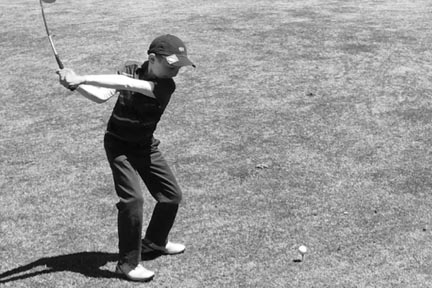MY PHILOSOPHY
The foundation of my teaching philosophy is to get students into positions and situations that allow them to play more naturally, more athletically, and with less cognitive effort. In order to achieve that goal, we will discuss set up, swing mechanics, swing thoughts, feedback, and execution.
SET UP
Every golfer needs a consistent and fundamentally sound set up, but not every golfer’s set up will look the same. Swing style, body type, ball flight tendencies, and flexibility are just some of the aspects that have to be analyzed in order to find your perfect set up position. I believe that in order to play golf more athletically and naturally, alignment is the most important set up fundamental.
SWING MECHANICS
Once we have corrected as much of the ball flight issues as we can with set up corrections (and possibly equipment adjustments), it is time to focus on improving a student’s swing mechanics. I prefer to keep these adjustments as simple as possible while still achieving the most improvement possible. I was told once before – and have always remembered this saying – the best teacher is often the one who says the least. If you are already doing something well then there is no need to discuss it and muddy the water anymore than necessary.
SWING THOUGHTS
While our goal is to get each student to a place of minimal cognitive effort during the swing, we are not trying to get anyone to a place of no cognitive effort. I believe that each person is capable of many pre-swing adjustments but very few in-swing adjustments. Depending on each student’s ability, we will discuss either one swing thought at a time or one swing thought during the backswing and one swing thought during the downswing. By the end of each lesson, we should have discovered together which swing thoughts made the greatest impact.
FEEDBACK
Feedback is the information each shot provides us to analyze and learn from. I believe that every shot, good or bad, is another opportunity to learn about our progress. Together, we will discuss the feedback we are given and what it tells us so that you can begin to analyze it on your own. The learning process does not end when the lesson is over. You must learn to analyze your own feedback and make adjustments accordingly.
EXECUTION
As your learning progresses, it becomes time to execute the mechanics and thoughts together under pressure. As an accomplished tournament player who lives for those pressure packed situations, I can help you handle your own pressure situations. It may be a crowded driving range, the first tee shot of the day, or that knee-knocking 6-foot putt to win the tournament. Execution is all about the practices and processes that allow for success to take place.




